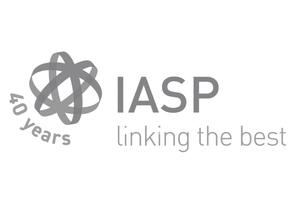01.06.2016
Tallinn University project Cross Motion: Innovative audiovisual services for health
The aim of the Cross Motion project is to bring together the audiovisual sector and other sectors and help them find opportunities for collaboration and innovative solutions. One project activity is to get the health and audiovisual sectors to collaborate and innovate.
The director of the Tallinn University Centre of Excellence for Media Innovation and Digital Culture, Indrek Ibrus, who is managing research for the Cross Motion project, explained that the idea of the project is in every sense to encourage cooperation between the audiovisual sector and three other sectors – health, tourism, and education. “This project is directed at the improvement of the innovation capacities of different sectors, focusing directly on enterprises in these sectors and especially on giving a boost to the emergence of new enterprises combining these areas.”
For this project the scope of the audiovisual sector is understood in very broad sense – all screen-based audiovisual forms of expression which involve moving pictures on different screens – from classical film and television production studios to video game makers.
The project, which began in March, will last for three years and consists of many component activities. In the course of the project, numerous hackathons, conferences, and studies, as well as the development of innovative prototypes will be organized.
“The first conference and hackathon will take place in August in Aarhus, and the second in September in Tallinn. After these first events we will issue the first call for prototype tenders,” notes Ibrus.
A springboard for start-ups
On the one hand, the aim of the project is to introduce the audiovisual sector’s contemporary capabilities to the health, tourism, and education sectors. “The other idea is that the audiovisual sector would discover for itself new business models, new areas to be active in, and through this new ways of generating income,” explains Ibrus.
According to Ibrus, the project’s greatest challenge is to raise awareness. “If we speak, for example, of filmmakers, they are always concentrated on their next movie. At first it may be difficult for them to see the creative potential or real challenge in collaborating, for example, with the health sector. Filmmakers are not emotionally ready to consider this. The aim of the project is to show that it can all be done very innovatively. All those applications or solutions with so-called practical value can still be done in a way which is creatively exciting.
Our first mapping study is being carried out at the moment. “We will look at what has already been done in our partner countries, in particular at the kind of solutions created which involve cross innovation. Later we will organise conferences for awareness raising and hackathons in order to develop new ideas. I believe that participating in these events will provoke discussion and it is easier to find new innovational ideas and important issues,” Ibrus says.
The Cross Motion project will fund the development of innovative prototypes. “Start-ups may receive up to 50,000 euros to develop innovative prototypes.” This means that we are offering start-ups direct tangible support. In other words, we are starting to facilitate the creation of start-ups in these areas of cross innovation,” explains Ibrus.
The project also supports export-oriented activities: “If this project leads to incubating even one innovative Estonian enterprise, there might be the opportunity to quickly scale it up to reach foreign markets.”
Innovations targeting the health sector
In the health sector the idea of the project is to focus primarily on the wellness sector. To apply new solutions with the aim of getting people to live healthier lives and take better care of their health. To this end one possibility is to create attractive gamified solutions involving a lot of audiovisual content. For example, video games have been created for people with heart disease with the aim of instructing the patients to behave correctly, take their medicine at the right time, or undertake physical activity at the right moments. “Such video game examples really exist but are still very few in number,” Ibrus says.
In addition, according to Ibrus, video-based learning is a phenomenon becoming ever more widespread in modern culture: “Nowadays if a person wants to know how to do something, he first looks on YouTube. There, however, you will find all kinds of stuff of dubious value. Health-related video solutions should be done more carefully and systematically – in this way we could educate people on how to do things properly and in accordance with current medical knowledge. To this end, it is necessary to collaborate with the health sectors of Estonia and other Baltic countries to ensure that the materials or applications that arise are high-quality and practical and have a scientific basis. A lot has been spoken about this. Now it is time to take action in the region and develop the right competence.”
A new kind of partner
The Cross Motion project currently has partners in all the countries bordering the Baltic Sea except Poland and Russia. The partners are mostly technology or creative industry incubators or cluster-type organizations involved in providing support in many different ways to start-ups. “The idea has always been that we must think outside the box and look for partners outside of our comfort zone,” Ibrus says.
The project has two partners in the health sector – the Estonian National Institute for Health Development and the Estonian Connected Health Cluster. “In case of describing the needs, perspectives and operations of the health sector, we depend on these two. Our aim is to understand the health sector and find out how audiovisual industry can offer beneficial solutions for you,” says Ibrus.
“I hope that in three years, audiovisual specialists will be familiar with cross innovation and collaboration with other sectors, and that there will be a significant increase in awareness. And people in those three sectors, including the health sector, will be accustomed to considering the possibilities offered by the audiovisual sector. At that point health sector enterprises will be ready to further develop cooperation with the audiovisual sector,” Ibrus said.

















